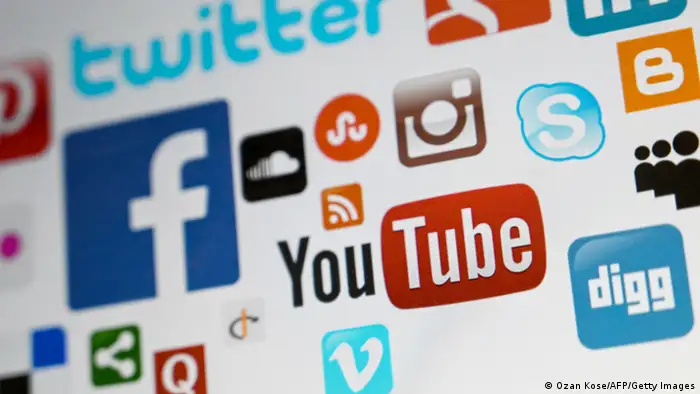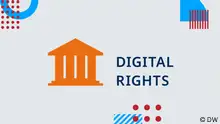MIL
Cyberbullying, a silent ghost
The MIL Campus brought together experts to discuss how Media and Information literacy can help protect people from cybercrime.
Screens create a false sense of safety, like an iron curtain between the outside world and our private lives. But nothing is further from the truth. Analog and online life have merged and the behaviors of the outside world are replicated online, aggravated by anonymity. The internet is full of examples of violence against vulnerable people, including youth and women. Cyberbullying occurs in many forms on numerous platforms, but it often goes unpunished. It's time to start identifying, reporting and putting a stop to it.
To move from theory to practice, the MIL Campus brought together highly experienced professionals working in both cybercrime and Media and Information Literacy (MIL), a key set of skills essential for protecting against online threats. Cyberbullying is not an abstract idea. Two young victims of online harassment shared their experiences. One of them was harassed by a co-worker who continually created fake profiles and sent violent threats until she decided to change her phone number and limit access to her social networks. The other young woman was cyberbullied by her classmates to the point that she left school and moved.
But what exactly is cyberbullying? It is defined as "a situation of repeated, lasting and intentional abuse and harassment, in which one person bullies another", in the words of Jordi Martin, a specialist in the prevention of cybercrime at the United Nations Office on Drugs and Crime (UNODC). There is a clear similarity between cyberbullying and bullying at school: a victim, a victimizer and an audience. The different social realities are reflected almost identically in social media. This explains the special vulnerability of regions like Central America, where violence remains one of the most acute social problems.
'No one taught us'
In Mexico, kids start using social media between the ages of six and eight, mostly when they are alone at home. In addition, at least a third of these young people are not familiar with the risks of these platforms or the systems in place to prevent these risks, according to a study conducted by Deyra Guerrero, a professor at the School of Media Studies at the Autonomous University of Nuevo Leon, Mexico, and one of the voices of the MIL Campus.
"We as young people are on TikTok, Instagram and Facebook but no one taught us how to interact," said Sara Martinez, editor-in-chief of the multi-platform media outlet Sónica.
MIL is an essential tool to protect people from cyberbullying but also to prevent people from taking part in it or to prevent our children from doing so. According to Guerrero, parents must have media skills to understand their children's world and help them prepare. Furthermore, it is essential to remember that everyone has the right to ask for help; that we must guarantee the safety of our devices, as cyberbullying often begins with access to private data; that we must not delete the attacks we receive, as this evidence can be useful for possible investigations; and finally, we must dare to report. Let's not forget that anyone, at any time, can become a victim of cyberbullying, and anyone can become a relative or friend of a bully.
From victims to agents of change
As with real world violence, women are harassed more often on social media than men. 64% of 400 women journalists from 50 countries said they had experienced some form of online violence in a survey conducted by the International Federation of Journalists. Although approximately half of the world's population is female, only 48% have access to the internet, compared to 58% of men. This digital gap goes hand in hand with lack of MIL skills and increases the vulnerability of women online, as they may not be able to assess the severity of the risks they face. Four women shared their experience on the subject at the MIL Campus.
Cyberbullying against women often has sexual connotations, causing serious social and personal harm, including psychological problems such as depression. Therefore, "digital violence not only remains in an intangible realm but translates into material impacts even if some of these threats are not met," said Mayeli Sánchez, co-founder of the Mexican organization Técnicas Rudas.
The cyberstalking of women also leads to dual abuse: the damage caused by the attack adds to the loss of freedom of expression. In 2018, an Amnesty International report revealed that attacks on Twitter cause users to abandon the platform or become silent, yet the social network does not react to this form of harassment.
"To avoid being harassed anymore, one stops using those spaces," said Ines Binder, a cyber-feminist and social communicator. There are many women who wonder "why be on Facebook or Twitter if there is violence against my body just because I am a woman? And that limits our spaces for political action," added Georgia Rothe, a lawyer with expertise in gender violence.
The lack or inefficiency of public policies that should protect women and condemn gender-based violence — both in real and digital life — play a decisive role. In El Salvador, every four hours and 42 minutes, a person is a victim of sexual violence, however, about 90% of rape reports go unpunished.
The media are crucial in addressing these issues and preventing their normalization. Metzi Rosales, a Salvadoran journalist and university professor, summarizes it this way: "As journalists, it is up to us to continue covering and reporting these cases because for many people, the media is the only source of education."
However, this must be done without the re-victimization of women or encouraging hate speech. To this end, it is key to create information consumers who have a critical spirit and demand a renewal of the media. One of the great pending tasks is gender parity in the media: to integrate women in the construction of news, beyond dealing with issues related to women.
"The real commitment is to include women in all discussions," concluded Rothe.
- Date 16.12.2020
- Author Irene Banos Ruiz
- Feedback: Send us your feedback.
- Print Print this page
- Permalink https://p.dw.com/p/3moyi
- Date 16.12.2020
- Author Irene Banos Ruiz
- Send us your feedback.
- Print Print this page
- Permalink https://p.dw.com/p/3moyi







